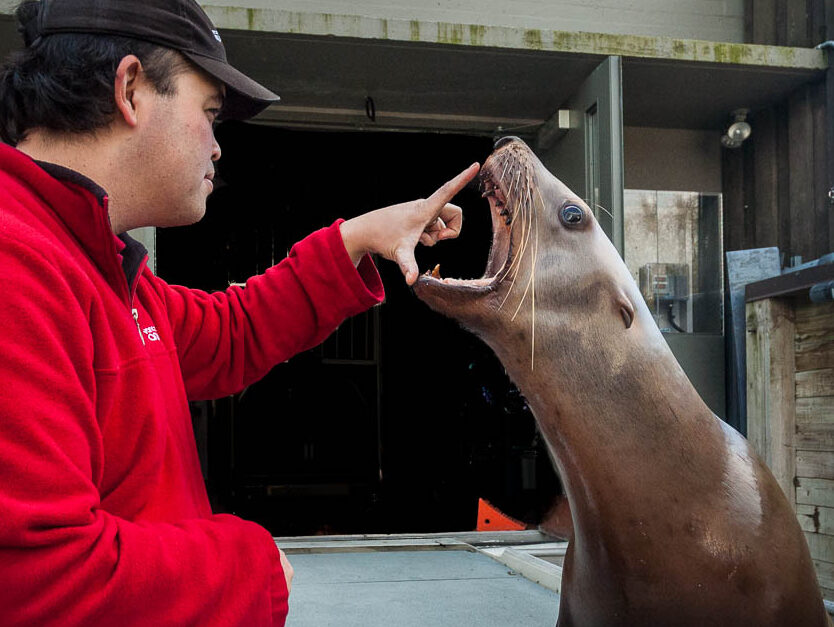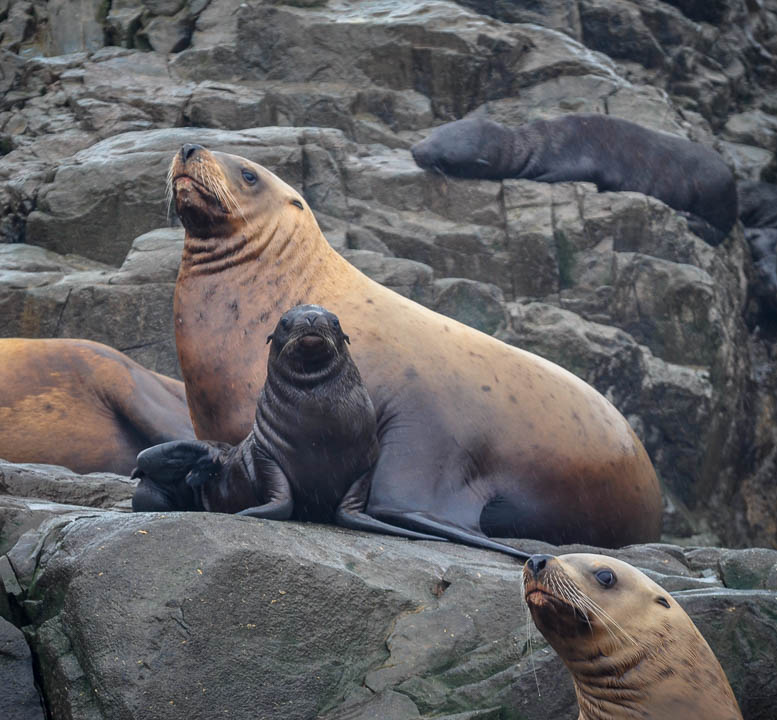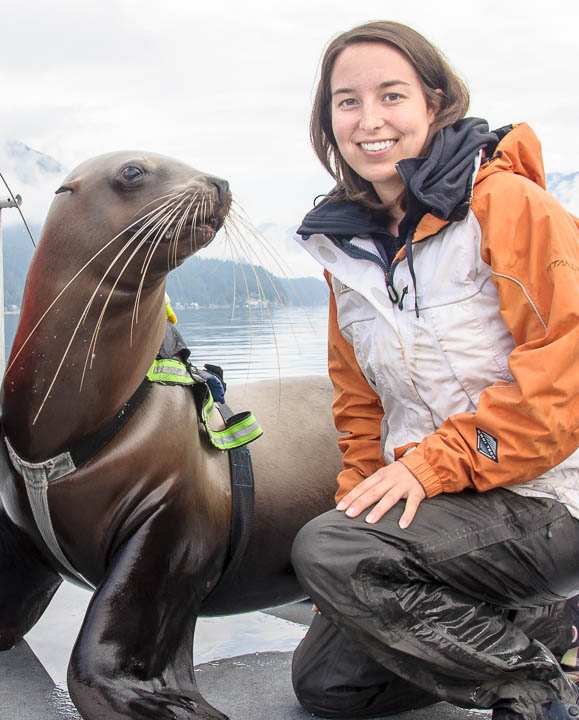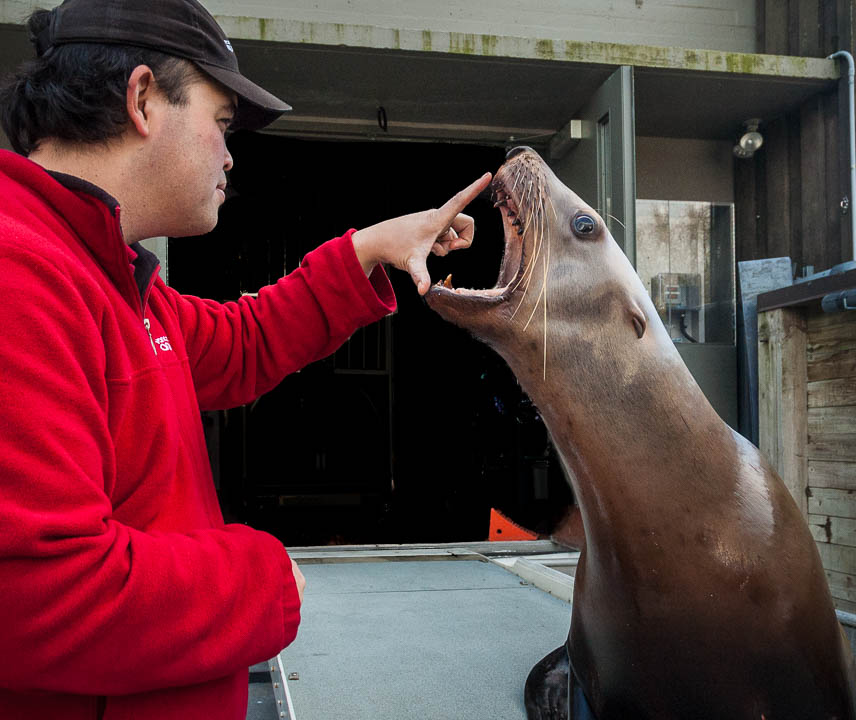
 Researchers publish first reference ranges for Steller sea lions
Researchers publish first reference ranges for Steller sea lions
Over the past 15 years, a small group of Steller sea lion pups has been raised to adulthood at the Vancouver Aquarium. In an effort to better understand their physiology, researchers and veterinary staff have kept precise records of their nutritional status and overall health.
Today, these records from Aquarium-raised animals provide a valuable biological library for studying the health of their wild counterparts.
Consortium researchers recently analyzed hundreds of blood samples to compile the first reference ranges for blood health in Steller sea lions. Their results were recently published in the Journal of Zoo and Wildlife Medicine
A Rare Opportunity
“You can learn a lot from a blood sample,” says Carling Gerlinsky (The University of British Columbia) who led the study. “The molecules in blood have been extensively studied in humans, and we can apply a lot of what we know to wildlife.”

Carling Gerlinsky with one of the female Steller sea lions at the Open Water Research Station. The sea lions wear a harness in the open ocean to carry scientific instruments.
When studying wild populations, it can be difficult to tell whether an animal is nutritionally healthy, or whether it is diseased. Analyzing a blood sample can provide these answers, but Gerlinsky acknowledges that obtaining blood samples in the wild is difficult.
It’s even more difficult to gather enough blood samples to know what is normal or abnormal across an entire population or species, she says.
“We had a unique opportunity at the Vancouver Aquarium,” she added. “We had access to a very large dataset of blood samples that were taken over 15 years. It’s rare to have data at our fingertips that spans that long, and we could see how the values change with age.”
Gerlinsky and her colleagues analyzed the data to establish the first baseline levels for blood health in Steller sea lions. These can be immediately useful as reference ranges for both wild and captive animals, she says.
“For example, rescue and rehabilitation groups often need to assess the health of an animal they are caring for,” she notes. “They can now compare our reference ranges with the levels they see in the animal they are treating, and determine whether that animal is healthy or not.”
Age and Exercise Matter
Gerlinsky and her colleagues analyzed samples from animals ranging from 3 weeks to 16 years in age. They found that nearly all of the 40+ blood parameters they studied either increased or decreased with age.

Each of the Steller sea lions cared for by the Vancouver Aquarium receives a daily physical checkup.
“Many of the changes in their blood chemistry reflected changes in their life history,” Gerlinsky says. “For example, their diet changes during weaning, their diving capacity improves as they grow, and their immune system matures over time. These changes are all reflected in the blood, so it’s important to know how old the animal is that you’re comparing to a reference range.”
The researchers also found differences in two key blood parameters among diving and non-diving animals. Some of the animals dove regularly at the Open Water Research Station, while others didn’t.
“I found it interesting that the act of diving and exercising caused a difference in some of those blood parameters,” Gerlinsky says. “This tells us that the blood parameters are responding to changes in the animals’ environment, and they’re not simply innate or genetically driven.”
Gerlinsky notes there are opportunities to further develop the reference ranges, especially by including more data from animals that dive regularly, and from male Steller sea lions.
 PUBLICATION
PUBLICATION
|

|

 |
||||||||||||
.
